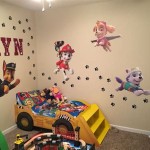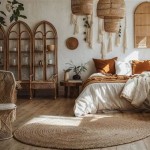How To Decorate a Living Room With a Blue Sofa and Couch
Decorating a living room with a blue sofa and couch offers a versatile foundation for a variety of design aesthetics. The color blue, often associated with tranquility and serenity, provides a calming influence that can be adapted to both vibrant and muted palettes. Successful incorporation of blue furniture requires careful consideration of complementary colors, textures, and overall room layout.
The impact of a blue sofa and couch within a living room extends beyond mere seating; it dictates the visual direction of the space. Selecting the correct shade of blue is crucial. Deeper, richer blues like navy or indigo evoke sophistication and formality, while lighter, more muted blues, such as sky blue or powder blue, create a relaxed and airy atmosphere. The choice of blue influences the mood and sets the stage for the selection of supporting elements like rugs, wall colors, and accessories.
The article will explore key aspects of decorating a living room featuring a blue sofa and couch, including selecting complementary color schemes, incorporating textures, and choosing appropriate accessories and accents.
Choosing a Complementary Color Palette
Establishing a complementary color palette is fundamental to harmonizing a living room with blue seating. The color wheel provides a useful tool for identifying hues that work well together. Complementary colors are those that reside opposite each other on the color wheel. For blue, the complementary color is orange. However, employing a strict orange throughout the room might be overwhelming. Instead, consider variations of orange such as terracotta, rust, or even warm wood tones. These variations provide the necessary contrast without being visually jarring.
Analogous colors, which are adjacent to blue on the color wheel, offer another avenue for creating a cohesive color scheme. Greens and purples, for example, blend seamlessly with blue, creating a harmonious and calming environment. A palette incorporating teal, turquoise, and lavender can result in a sophisticated and inviting living space. The key is to maintain a balanced ratio of colors, ensuring that the blue sofa and couch remain visually prominent without overpowering the other elements.
Neutral colors such as white, gray, and beige serve as excellent backdrops for a blue sofa and couch. These neutrals allow the blue furniture to take center stage while providing a sense of spaciousness and light. When using neutrals, texture becomes even more important to prevent the room from feeling flat or uninspired. Consider incorporating textured throws, cushions, and rugs to add depth and visual interest to the space.
Monochromatic color schemes, which utilize different shades and tints of a single color, can also be effective. A monochromatic blue scheme might incorporate navy sofas, light blue walls, and various shades of blue in accessories and artwork. This approach creates a sense of unity and sophistication. However, it's important to introduce different textures and patterns to prevent the room from feeling monotonous.
Another factor to consider is the undertone of the blue sofa and couch. Some blues have cooler undertones, while others have warmer undertones. Cooler blues pair well with grays, silvers, and whites, while warmer blues complement golds, creams, and browns. Understanding the undertone of the blue will guide the selection of complementary colors and ensure a harmonious overall aesthetic.
Integrating Textures and Patterns
The successful incorporation of textures and patterns is vital in preventing a living room featuring a blue sofa and couch from appearing one-dimensional. Texture adds tactile interest and visual depth, while patterns introduce visual movement and personality. The interplay of textures and patterns should complement the chosen color scheme and enhance the overall design aesthetic.
Textural elements can be introduced through various materials, including fabrics, rugs, and wall coverings. A plush velvet throw on a blue sofa adds a touch of luxury and warmth, while a woven rug with a subtle geometric pattern introduces visual interest. Consider incorporating materials such as linen, wool, and leather to create a layered and inviting atmosphere. The juxtaposition of smooth and rough textures, such as a smooth leather cushion against a textured wool throw, adds depth and complexity to the space.
Patterns can be incorporated through cushions, curtains, wallpaper, and artwork. When using patterns, it's important to consider their scale and complexity. Large-scale patterns can make a bold statement, while smaller, more intricate patterns add a subtle layer of visual interest. Mixing different patterns requires careful consideration of their scale and color palette. A good rule of thumb is to vary the scale of the patterns and to ensure that they share a common color or theme.
For example, a living room with a navy blue sofa might feature cushions with a small-scale geometric pattern, a rug with a medium-scale floral pattern, and curtains with a large-scale abstract pattern. The patterns should complement each other without competing for attention. Introduce solid-colored elements to balance the patterned pieces and prevent the room from feeling too busy.
Furthermore, the texture of the blue sofa and couch itself should be considered. A velvet sofa will have a different visual impact than a linen sofa. The texture of the sofa should inform the selection of complementary textures and patterns. A smooth velvet sofa might benefit from the addition of textured cushions and throws, while a linen sofa might benefit from the addition of smooth leather accents.
Consider the lighting in the room when choosing textures and patterns. Natural light will enhance the textures and patterns, while artificial light can alter their appearance. Experiment with different lighting options to see how they affect the overall ambiance of the room.
Selecting Accessories and Accents
Accessories and accents serve as the finishing touches that personalize a living room and enhance its overall aesthetic. They provide opportunities to introduce color, texture, and personality, complementing the blue sofa and couch and creating a cohesive and inviting space. Careful selection of accessories is crucial to achieving a balanced and harmonious design.
Cushions and throws are essential accessories for a living room, providing both comfort and visual interest. Choose cushions and throws in complementary colors and textures to enhance the aesthetic appeal of the blue sofa and couch. Consider incorporating cushions in different shapes and sizes to add visual variety. Layering throws on the sofa adds depth and warmth to the space. Experiment with different textures, such as velvet, linen, and faux fur, to create a tactile and inviting atmosphere.
Rugs define the seating area and anchor the blue sofa and couch within the room. Choose a rug that complements the color scheme and adds visual interest. Consider the size of the rug in relation to the size of the seating area. A rug that is too small can make the room feel disjointed, while a rug that is too large can overwhelm the space. Ideally, the rug should extend beyond the front legs of the sofa and chairs.
Artwork and wall decor add personality and visual interest to the living room. Choose artwork that complements the color scheme and reflects your personal taste. Consider the size and scale of the artwork in relation to the size of the wall. A large piece of artwork can serve as a focal point, while smaller pieces can be grouped together to create a gallery wall. Wall mirrors can enhance the sense of space and light in the room.
Lighting fixtures play a crucial role in setting the mood and enhancing the ambiance of the living room. Incorporate a variety of lighting sources, including ambient lighting, task lighting, and accent lighting. Ambient lighting provides overall illumination, while task lighting is used for specific tasks such as reading or working. Accent lighting highlights architectural features or artwork. Table lamps, floor lamps, and chandeliers can all contribute to a well-lit and inviting living space.
Plants and greenery add life and freshness to the living room. Choose plants that are appropriate for the lighting conditions and your level of maintenance. Plants can be placed on shelves, tables, or in floor planters. They not only enhance the aesthetic appeal of the room but also improve air quality.
Decorative objects, such as vases, sculptures, and candles, add personality and visual interest to the living room. Choose objects that complement the color scheme and reflect your personal style. Group objects together in vignettes to create visual focal points. Consider the scale and proportion of the objects in relation to each other and the surrounding furniture.
Finally, carefully consider the placement of accessories to create a balanced and harmonious composition. Avoid overcrowding the space with too many accessories. Less is often more. Focus on selecting a few well-chosen pieces that complement the blue sofa and couch and enhance the overall aesthetic of the living room. Rotate accessories seasonally to keep the space feeling fresh and updated.

30 Living Rooms With Stylish Blue Couches Couch Room Sofas Decor

How To Decorate With A Blue Sofa Interior Design Advice

Blue Sofa Living Room Ideas 10 Ways To Style Statement Colour Velvet Sofas Decor

10 Décor Ideas To Go With An On Trend Blue Velvet Sofa Houzz Ie

Living Room Decor Ideas Around Your Blue Sofa Swyft

Blue Couch Living Room Ideas 10 Ways To Complement This Standout Color

How To Decorate Around A Navy Blue Sofa

Modern Living Room With Wicker Furniture And Blue Sofas
Why Do Some People Have A Thing Against Blue Sofas Quora

8 Amazing Navy Blue Sofa Living Room Ideas Urvission Interiors







